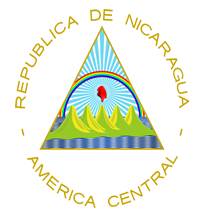Nicaragua: Government
Key Figures
- Chief of State:
- President José Daniel Ortega Saavedra
- Head of Government:
- President José Daniel Ortega Saavedra
Overview
- Government Name:
- Republic of Nicaragua
- Constitution:
- Promulgated: 1987; Was reformed to give new powers and independence to the National Assembly; allowing the assembly to override a presidential veto with a simple majority vote. The President's ability to pocket veto a bill was also eliminated. Establishes a democratic system of government with a mixed economy based upon a separation of powers between the branches of government.
- Government Type:
- Presidential Republic

Index of Economic Freedom
Grades each country on a scale of 0 to 100, based on ten freedoms, with 100 representing the greatest amount of economic autonomy from government intervention. Source: Heritage Foundation (2023)
Country Risk Rating
D
A high-risk political and economic situation and an often very difficult business environment can have a very significant impact on corporate payment behavior. Corporate default probability is very high. Source: Coface (2024)
Government Branches
| Main Powers | Election Process | Election Cycle 1 | |
|---|---|---|---|
| Executive | President appoints council of ministers and is the head of government. |
Elected by plurality vote. |
5 years |
| Judicial | Supreme Court supervises what is considered to be an ineffective judicial system. The Supreme Electoral Council is responsible for organizing and conducting elections, plebiscites, and referendums. |
Supreme Court elected by the National Assembly and Supreme Electoral Council elected by the National Assembly. |
5 years |
| Legislative | Main legislative body of Nicaragua. |
90 members are elected through a closed-list proportional representation system and 2 members are reserved for the former president. |
5 years |
Regional Trade Blocs
No Regional Trade BlocsInternational Organization Participation [2]
Environmental Agreements [3]
Tax Information [2]
- Tax Authority:
- Ministry of Finance
- Tax Name:
- VAT
Sources:
- ElectionGuide http://www.electionguide.org/
- EY, http://www.ey.com
- CIA World Factbook, https://www.cia.gov/the-world-factbook/
- U.S. Bilateral Relations Fact Sheets http://www.state.gov/r/pa/ei/bgn/


